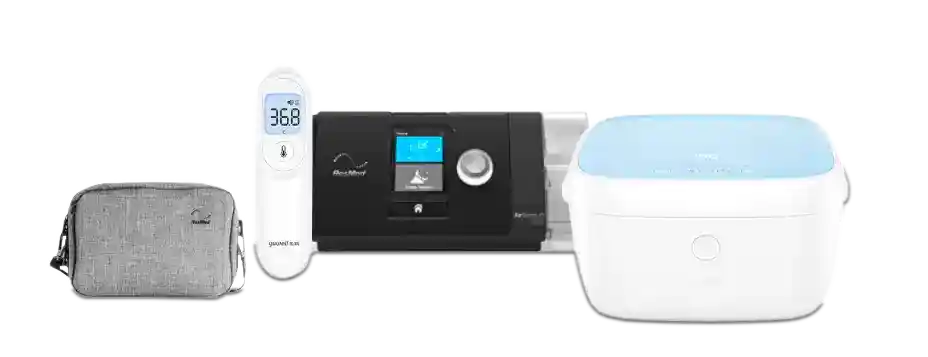3M™ Medipore™ H Perforated Soft Cloth Medical Tape
3M™ Medipore™ H Soft Cloth Surgical Tape is part of the Flexible Tape Category offering multi-directional stretch to accommodate swelling, distention, movement, and helps minimize the risk for skin injury. Sold as a case of 2 Inch x 10 Yard (12 ct. Case), 3 Inch x 10 Yard (12 ct. Case), 6 Inch x 10 Yard (12 ct. Case), 8 Inch x 10 Yard (6 ct. Case), or 2 Inch X 2 Yard (48 ct. Case).
**This item is a non-stock, special order item from the manufacturer. Please allow 2 - 4 weeks for delivery.
**This item is a non-stock, special order item from the manufacturer. Please allow 2 - 4 weeks for delivery.
As low as
$26.03
Regular Price
$32.54
In stock
SKU
286-All
Details
3M™ Medipore™ H Perforated Soft Cloth Medical Tape is perfect for securing bandages, covering gauze, to help with urology needs and much more. And because it is hypoallergenic and latex free you can rest assured it will be gentle on your skin. Sold as a case of 2 Inch x 10 Yard (12 ct. Case), 3 Inch x 10 Yard (12 ct. Case), 6 Inch x 10 Yard (12 ct. Case), 8 Inch x 10 Yard (6 ct. Case), or 2 Inch X 2 Yard (48 ct. Case).
Features & Benefits
Features:
- Bi-directional stretch accommodates swelling, distention and movement
- Highly breathable soft cloth tape
- Flexible
- Hypoallergenic
- Not Made with Natural Rubber Latex
- Water resistant
- Easy tear perforations with no scissors necessary
What's Included
- 1 X 1 Case of 2 Inch x 10 Yard (12 ct.), 3 Inch x 10 Yard (12 ct.), 6 Inch x 10 Yard (12 ct.), 8 Inch x 10 Yard (6 ct.), or 2 Inch X 2 Yard (48 ct.).
Specifications
| Manufacturer | 3M |
| SKU | 2862, 2863, 2866, 2868, or 2862S |
| Application | Medical Tape |
| Material | Soft Cloth |
| Latex Free Indicator | Not Made with Natural Rubber Latex |
| Color | White |
| Sterility | Non-Sterile |
| Size | 2 Inch x 10 Yard, 3 Inch x 10 Yard, 6 Inch x 10 Yard, 8 Inch x 10 Yard, or 2 Inch X 2 Yard |
| Total Number of Rolls Per Order | 12, 12, 12, 6, or 48 |
FAQ's
Q: How many rolls of 3M™ Medipore™ H Soft Cloth Surgical Tape come per order?
A: That varies based on what size you order:
A: Unlike the Medipore tapes and pre-cut dressing pads, both Medipore +Pad dressings and 3M™ Steri-Strip™ Adhesive Skin Closures undergo gamma irradiation for sterilization. Gamma sterilization makes the adhesive firmer. So if you start off with a softer adhesive, the firmness will be just right after the gamma irradiation. Because the rolls of Medipore tape are not sterilized prior to sale, they can use an adhesive that is firm to start with.
Q: Is there a special way to apply Medipore tape?
A: The direction of the stretch should be considered when securing a dressing or tubing to an area that is at high risk for distention, edema, hematoma formation, or movement. Anecdotally, applying soft cloth tape parallel to the incision appears to be associated with fewer skin injuries than taping perpendicular to the incision. When distention or movement under the tape is not anticipated, the direction of the stretch of Medipore tape is not known to make a difference.
Q: Why do we have an expiration date for tapes? What happens when a tape “expires?”
A: The expiration date allows us to ensure performance of the tape products within a specified time period. In general, we do not expect changes in performance shortly after the expiration date, but 3M ensures performance within that time frame. The recommended shelf life for Medipore tape and the Medipore pre-cut dressing covers is 3 years under normal storage conditions. The Medipore +Pad dressings shelf life is 3 years or sooner, if sterility is broken.
Q: Why don’t we make a soft cloth tape on a liner?
A: Two disadvantages of a soft cloth on liner are: (1) the liner waste generated and (2) its tendency to stick to itself when static is generated as the liner is removed. Soft cloth without a liner is easy to handle, is designed to release from itself, and may be used for the majority of applications without waste. A 3M soft cloth tape on a liner is available in Europe and Asia, but it is not sold in the U.S. at this time.
Q: What is the best way to get the last of the Medipore tape off the roll (AKA “I want to use it all up”)?
A: If you are having difficulty getting the last bit of Medipore tape off of the roll, look at how you are holding the tape while you are tearing it. Although the tape nearest the core IS wound a little tighter than the outside layers, the most common cause of tight unwind may be squeezing the roll when tearing off sections of tape (think of how it is more difficult to unwind 3M™ Coban™ Self-Adherent Wrap or a soft tape after someone has squeezed the roll). Try holding the roll gently, unwind the amount of tape you want, put fingers on either side of the perforations and tear. Another way to avoid squeezing the roll: put your right middle finger inside the tape core; unwind the tape to the length you need so that the perforations stop just at the edge of the roll; support the edge of the tape next to the roll with your right thumb; now, using your left hand, tear down at the perforations.
Q: Which of the medical tapes are the most gentle?
A: The most gentle tapes for repeated taping are 3M™ Kind Removal Silicone Tape, 3M™ Medipore™ H tape, 3M™ Micropore™ Surgical Tape, and 3M™ Transpore™ White Surgical Tape.
Q: How can I increase tape adhesion?
A: The key concepts to maximize adhesion are:
A: We tend to hold tape tightly, especially when tearing it off the roll and when gauging where we plan to put the tape. Because the tapes have pressure sensitive adhesives, when we hold them tightly, they stick even more to our gloves. But, the adhesives were designed to release from gloves so try holding the tape a little less tightly, and it will usually “let go”.
Q: What is the best way to remove tape?
A: Proper tape removal is critical in reducing the occurrence of traumatic skin injuries such as skin stripping. First, loosen the edges of the tape. You may “start” an edge of the tape by pressing a small piece of tape onto the corner, like a pop tab, to lift the pressure sensitive adhesive. Stabilize the skin with one finger. Remove the tape “low and slow” in the direction of hair growth. Keep the tape close to the skin surface and pulled back over itself. Removing tape at an angle will increase tension on the skin and increase the risk of mechanical trauma. As the tape is removed, continue to support the newly exposed skin. Support close to the “peel edge” is particularly important for thin or easily distensible skin.
Q: What if I use lotion or an adhesive remover and need to tape over the same area?
A: Reassess the skin. If you wish to retape over an area where you used adhesive remover or lotion, you will either need to remove the lotion or adhesive remover or use a lotion that allows you to tape over it. Some lotions that allow you to retape may actually increase adhesion of some tapes on some people, so it is important to use good technique for subsequent tape removal. You may wish to protect areas that will be exposed to repeated taping with an alcohol-free barrier film such as 3M™ Cavilon™ No Sting Barrier Film. Removing the tape will also remove the barrier film, so the film should be reapplied and allowed to dry before retaping. Will want to link to the other 3M product.
A: That varies based on what size you order:
- 2 Inch x 10 Yard, 12 ct. Case
- 3 Inch x 10 Yard, 12 ct. Case
- 6 Inch x 10 Yard, 12 ct. Case
- 8 Inch x 10 Yard, 6 ct. Case
- 2 Inch X 2 Yard, 48 ct. Case
A: Unlike the Medipore tapes and pre-cut dressing pads, both Medipore +Pad dressings and 3M™ Steri-Strip™ Adhesive Skin Closures undergo gamma irradiation for sterilization. Gamma sterilization makes the adhesive firmer. So if you start off with a softer adhesive, the firmness will be just right after the gamma irradiation. Because the rolls of Medipore tape are not sterilized prior to sale, they can use an adhesive that is firm to start with.
Q: Is there a special way to apply Medipore tape?
A: The direction of the stretch should be considered when securing a dressing or tubing to an area that is at high risk for distention, edema, hematoma formation, or movement. Anecdotally, applying soft cloth tape parallel to the incision appears to be associated with fewer skin injuries than taping perpendicular to the incision. When distention or movement under the tape is not anticipated, the direction of the stretch of Medipore tape is not known to make a difference.
Q: Why do we have an expiration date for tapes? What happens when a tape “expires?”
A: The expiration date allows us to ensure performance of the tape products within a specified time period. In general, we do not expect changes in performance shortly after the expiration date, but 3M ensures performance within that time frame. The recommended shelf life for Medipore tape and the Medipore pre-cut dressing covers is 3 years under normal storage conditions. The Medipore +Pad dressings shelf life is 3 years or sooner, if sterility is broken.
Q: Why don’t we make a soft cloth tape on a liner?
A: Two disadvantages of a soft cloth on liner are: (1) the liner waste generated and (2) its tendency to stick to itself when static is generated as the liner is removed. Soft cloth without a liner is easy to handle, is designed to release from itself, and may be used for the majority of applications without waste. A 3M soft cloth tape on a liner is available in Europe and Asia, but it is not sold in the U.S. at this time.
Q: What is the best way to get the last of the Medipore tape off the roll (AKA “I want to use it all up”)?
A: If you are having difficulty getting the last bit of Medipore tape off of the roll, look at how you are holding the tape while you are tearing it. Although the tape nearest the core IS wound a little tighter than the outside layers, the most common cause of tight unwind may be squeezing the roll when tearing off sections of tape (think of how it is more difficult to unwind 3M™ Coban™ Self-Adherent Wrap or a soft tape after someone has squeezed the roll). Try holding the roll gently, unwind the amount of tape you want, put fingers on either side of the perforations and tear. Another way to avoid squeezing the roll: put your right middle finger inside the tape core; unwind the tape to the length you need so that the perforations stop just at the edge of the roll; support the edge of the tape next to the roll with your right thumb; now, using your left hand, tear down at the perforations.
Q: Which of the medical tapes are the most gentle?
A: The most gentle tapes for repeated taping are 3M™ Kind Removal Silicone Tape, 3M™ Medipore™ H tape, 3M™ Micropore™ Surgical Tape, and 3M™ Transpore™ White Surgical Tape.
Q: How can I increase tape adhesion?
A: The key concepts to maximize adhesion are:
- Start with clean, dry skin
- Touch the sticky surface of the tape as little as possible
- Apply sufficient pressure to the tape to get the adhesive into the nooks and crannies of the skin
- Cover adequate surface area so that the tape can support the tubing or dressing
- Obtain full contact between the tape and the skin or tubing so that moisture cannot slip between the two and loosen the tape
- Most adhesives stick best to clean, dry surfaces so try to minimize moist conditions as much as possible.
- Remove substances that contain emollients or oils, such as most lotions and adhesive tape removers.
- If the skin is very oily, use a mild soap and water to remove the excess oil and pat dry. An alcohol wipe may also be used to remove the excess oil, but since it is very drying, it should be used with care
- To protect at-risk skin, 3M™ Cavilon™ No Sting Barrier Film may be used under the tape.
- If you are using a prep solution, let it dry completely before applying the tape.
A: We tend to hold tape tightly, especially when tearing it off the roll and when gauging where we plan to put the tape. Because the tapes have pressure sensitive adhesives, when we hold them tightly, they stick even more to our gloves. But, the adhesives were designed to release from gloves so try holding the tape a little less tightly, and it will usually “let go”.
Q: What is the best way to remove tape?
A: Proper tape removal is critical in reducing the occurrence of traumatic skin injuries such as skin stripping. First, loosen the edges of the tape. You may “start” an edge of the tape by pressing a small piece of tape onto the corner, like a pop tab, to lift the pressure sensitive adhesive. Stabilize the skin with one finger. Remove the tape “low and slow” in the direction of hair growth. Keep the tape close to the skin surface and pulled back over itself. Removing tape at an angle will increase tension on the skin and increase the risk of mechanical trauma. As the tape is removed, continue to support the newly exposed skin. Support close to the “peel edge” is particularly important for thin or easily distensible skin.
Q: What if I use lotion or an adhesive remover and need to tape over the same area?
A: Reassess the skin. If you wish to retape over an area where you used adhesive remover or lotion, you will either need to remove the lotion or adhesive remover or use a lotion that allows you to tape over it. Some lotions that allow you to retape may actually increase adhesion of some tapes on some people, so it is important to use good technique for subsequent tape removal. You may wish to protect areas that will be exposed to repeated taping with an alcohol-free barrier film such as 3M™ Cavilon™ No Sting Barrier Film. Removing the tape will also remove the barrier film, so the film should be reapplied and allowed to dry before retaping. Will want to link to the other 3M product.
Reviews





